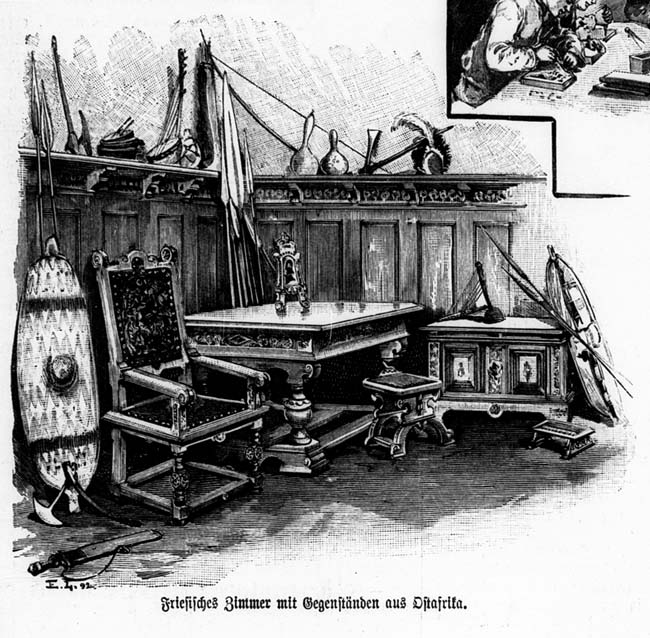Collection of Objects from German East Africa in the “Rauhes Haus” in Hamburg-Horn (1892)
Abstract
Fascination with “exotic” lands had always been an impetus to European exploration, mercantile exchange abroad, and imperial conquest. In Imperial Germany (1871–1918), this fascination ran deep among “knowledge workers” in the civil service, who were charged not only with collecting information from colonial zones but also with comparing and ranking civilizations on the basis of language, ethnography, and religion, among other variables. This picture shows objects from colonial German East Africa [Deutsch-Ostafrika], which were exhibited in the so-called Frisian Room in the “Rauhes Haus” in Hamburg-Horn. The “Rauhes Haus,” which still exists today, is a diaconal institution for the care and education of children from destitute families. The objects on display had been brought back to Germany by male nurses who had trained at the “Rauhes Haus” before being sent to Africa as volunteer “war nurses” during the suppression of an 1888-89 revolt in the coastal areas of German East Africa. It is unclear whether these objects functioned solely as “exotic” decoration or whether they were also used in school instruction.
Source

Source: Original: Frisian Room with Objects from East Africa. Pictures from the “Rauhes Haus” near Hamburg. Original drawings by E. Limmer, in Illustrirte Zeitung, August 27, 1892, p. 239. Digital reproduction published as part of pictura paedagogica online, http://opac.bbf.dipf.de/cgi-opac/bil.pl?t_direct=x&fullsize=yes&f_IDN=b0080334hild